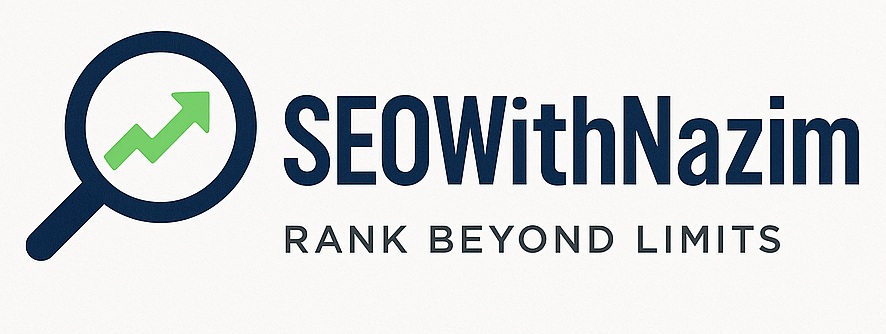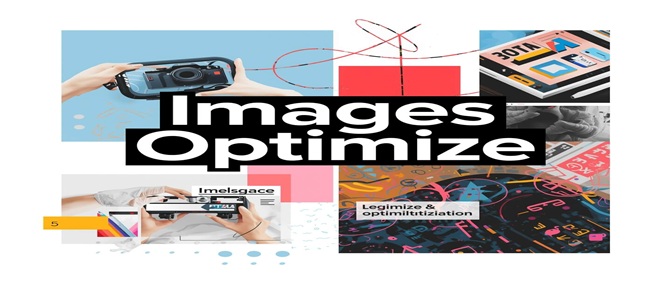Images optimize your site by reducing load time, improving SEO, and enhancing user experience without sacrificing quality. Techniques like image compression, responsive images, proper file names, and descriptive alt tags help maintain speed and boost visibility. These methods ensure faster page speed, better mobile performance, and stronger SEO ranking without slowing down your website
🔑 Key Takeaways:
- Image SEO plays a critical role in improving visibility, rankings, and user experience.
- Large, unoptimized images negatively impact page speed, bounce rate, and overall SEO ranking factors.
- Use responsive images and match image dimensions and loading time to devices for better mobile performance.
- Descriptive alt tags for SEO and meaningful file names for images help search engines understand image content.
- Formats like WebP and AVIF offer high-quality visuals with reduced file size for faster load times.
- Use image compression tools like TinyPNG, ShortPixel, and Squoosh to reduce size without losing quality.
- Avoid decorative image bloat; each image should serve a clear purpose.
- Utilize a CDN to improve global website load time and deliver images quickly.
- Translate alt tags for SEO for multilingual sites to improve global search visibility.
- Images Optimize strategies differently for informational (how-to visuals) vs. transactional (product images) search intent.
- Include voice-friendly and accessible descriptions to support screen readers and voice search SEO.
Why Image Optimization Matters for SEO
Image SEO is not just a technical task; it directly impacts your website’s visibility and user experience. Properly optimized images reduce website load time, improve user retention, and signal relevance to search engines. Images that are not optimized can slow down your site, cause poor mobile performance, and hurt your overall SEO ranking factors. By focusing on image compression, choosing the right formats, and applying descriptive alt tags for SEO, you’re not only enhancing user experience but also helping search engines better understand and rank your content.
1. Impacts Page Load Speed, Which Affects Rankings and Bounce Rates
Page speed is one of the core SEO ranking factors. Unoptimized images can drastically increase your website load time, especially on slower networks or mobile devices. Here’s how:
Large image files make up a significant portion of a webpage’s total size.
When users land on a page that takes more than 3 seconds to load, they’re more likely to bounce.
Search engines track bounce rate and may interpret high bounce rates as a signal that the content isn’t useful.
How Images Affect Page Speed:
Image dimensions and loading time play a major role. Oversized images take longer to render.Improper use of responsive images means devices load large versions unnecessarily.Non-optimized formats like BMP or TIFF can be bulky and slow to load.
Ways to Minimize Image Impact on Page Speed:
- Use proper image compression techniques.
- Choose file formats like WebP or AVIF.
- Resize images to match actual display size.
- Serve images through a CDN for faster delivery.
- Avoid using too many decorative images that don’t add value.
- Tools to Measure Page Speed and Image Impact: (a)Google PageSpeed Insights (b)GTmetrix (c)Lighthouse
All these help analyze how images optimize your page or slow it down.
2. Helps Search Engines Understand Content Through Alt Text and File Names
Search engines can’t “see” images; they rely on descriptive metadata to understand what an image is about. That’s why alt tags for SEO and file names for images are essential.
A good alt tag provides context to both search engines and users relying on screen readers. It boosts accessibility and SEO simultaneously. Likewise, using descriptive file names for images helps search engines connect visual content with the topic. For example, instead of IMG1234.jpg, use on-page-seo-checklist.jpg.
This practice enhances the semantic relationship between your text and image content, improving the chances of appearing in related image search results and boosting overall Image SEO.
3. Boosts Image Search Visibility
Optimized images can appear in Google Images, which drives targeted traffic. If you’re using relevant alt tags for SEO, proper file names for images, and lightweight formats, your content stands a better chance of ranking in image results.
This is especially useful for eCommerce, portfolios, blogs, and tutorials, where users may find your content first through images. Good Image SEO opens up another avenue for traffic that many overlook.
4. Contributes to Better Mobile Performance
On mobile devices, speed and layout are crucial. Unoptimized images can ruin both.Using responsive images ensures the image size adapts based on screen resolution. Smaller devices load smaller versions, reducing website load time. This enhances the overall mobile performance, leading to better engagement, lower bounce rates, and improved rankings.
Choose the Right Image File Format
The format you choose directly impacts file size, quality, and speed. Below are popular formats with their use cases:
1. JPEG
- Best for photographs and complex color images.
- Offers good balance between quality and file size.
- Supports image compression without significant quality loss.
- Not ideal for transparency.
2. PNG
- Suitable for images requiring transparency (e.g., logos).
- Higher file size compared to JPEG.
- Lossless compression, meaning no quality loss.
- Use sparingly to avoid increasing page speed load time.
3. WebP
- Designed specifically for the web.
- 25–34% smaller than JPEG with similar quality.
- Supports transparency.
- Compatible with most modern browsers.
4. AVIF
- Newer than WebP, with even better compression.
- Smaller file size with higher quality.
- Not supported by all browsers yet but growing fast.
Compress Images Without Losing Quality
Image compression reduces file size, which improves page speed without compromising visuals. Several tools can help:
| Tool | Compression Type | Quality Retention | Cost | Notable Feature |
| TinyPNG | Lossy | High | Free/Paid | Simple drag & drop |
| ShortPixel | Lossy & Lossless | Very High | Free/Paid | Offers WordPress plugin |
| Squoosh | Lossy & Lossless | Customizable | Free | In-browser optimization |
Each tool lets you manage how images optimize without losing sharpness. Web tools like these also allow batch processing, saving time for large content sites.
Resize Images to Match Display Requirements
Using full-resolution images when only thumbnails are needed wastes bandwidth. Always match image dimensions and loading time to the context in which the image appears.
Use tools like Photoshop, Canva, or Figma to resize before uploading. Alternatively, responsive design frameworks (like srcset) allow the browser to pick the best size.
This practice improves page speed, especially on mobile. It also prevents layout shifts that affect user experience and Core Web Vitals scores.
Use Descriptive File Names and Alt Text
Descriptive file names for images and accurate alt tags for SEO increase contextual relevance.
Alt Text: Use relevant keywords naturally. Describe the image accurately.
File Name: Use dashes to separate words. Be concise but descriptive.
Example:
Bad: IMG0023.jpg, Alt: “Image”
Good: seo-checklist-infographic.jpg, Alt: “Infographic showing on-page SEO checklist”
This supports Image SEO and helps screen readers, tying into accessibility best practices.
Use CDN for Faster Image Delivery
A Content Delivery Network (CDN) distributes your images across global servers. This reduces latency and website load time, especially for international visitors.
CDNs like Cloudflare, BunnyCDN, and ImageKit also offer on-the-fly image compression, format conversion, and resizing. They’re essential for maintaining speed at scale.
Avoid Decorative Image Bloat
Images should support your content’s intent. Decorative images that don’t add value should be limited.
Each image adds to load time. Use CSS for decorative effects or icons where possible. Prioritize relevance and performance in your image strategy.
Check Image SEO Performance
- You can monitor Image SEO performance using tools like:
- Google Search Console (Image search data)
- Screaming Frog (checks missing alt tags)
- Sitebulb (technical image audits)
- Regular audits ensure your images optimize for both users and search engines.
Informational Image Optimization
Informational queries focus on knowledge
Optimizing images for SEO on informational content ensures that search engines can interpret visuals accurately without affecting website load time. Begin with choosing responsive images that scale according to device type. This supports both mobile performance and desktop display. Use relevant alt tags for SEO that describe the image with keyword context. It helps with accessibility and indexing.
Always use descriptive file names for images. Instead of “IMG_1234.jpg,” name it like “on-page-seo-checklist.jpg.” This aligns with SEO ranking factors and improves discoverability in image search.
Another critical step is image compression. Tools like TinyPNG or ImageOptim reduce file size without quality loss. This directly boosts page speed, an essential factor in SEO and user experience.
Maintain appropriate image dimensions and loading time balance. Avoid using oversized files scaled down with HTML or CSS. Instead, resize before uploading to save bandwidth.
| Element | Why It Matters for SEO |
|---|---|
| Alt Tags for SEO | Improve accessibility and keyword context |
| Image Compression | Reduces load time |
| Responsive Images | Enhances display on all devices |
| File Names for Images | Helps indexing and improves search visibility |
Transactional Image Optimization
transactional queries aim at purchase intent.
For product pages or landing content, images optimize not just for search, but also for conversion. Every image must load fast and look crisp. Use image compression techniques to lower file size, which directly improves page speed and website load time—both of which affect bounce rate.
Ensure high-resolution responsive images that display correctly across screen sizes. Product zoom features or alternate views should not slow down mobile performance. Consider lazy loading, which delays image loading until a user scrolls down. This technique saves initial load time and improves engagement.
Alt tags for SEO should include product-related keywords. They help users using screen readers and also boost chances of appearing in Google Images for transactional queries.
Use keyword-rich file names for images, like “men-black-sneakers.jpg,” instead of default names. This small step can increase visibility for purchase-intent searches.
Also, maintain consistent image dimensions and loading time to avoid layout shifts that harm user trust. The faster the content loads, the higher the chances of conversion.
| Optimization Step | Impact on SEO & Sales |
|---|---|
| File Names for Images | Increases relevancy for search queries |
| Image Compression | Reduces bounce and improves conversions |
| Mobile Performance | Ensures smooth shopping on mobile devices |
Use of Captions
Captions are often overlooked but can enhance image SEO and user understanding. In informational or transactional content, captions act as a bridge between text and image. They help clarify the context and give another opportunity to use related keywords.
Keep captions concise and relevant. When possible, naturally include terms like page speed, SEO ranking factors, or responsive images to reinforce keyword signals without stuffing. Avoid generic phrases—each caption should reflect the image content and how it ties into the topic.
Search engines read captions, which makes them useful for indexing. This means better visibility for images in both standard and image search results.
In blog posts, captions can reduce bounce rate by encouraging readers to engage with the visual. In product pages, captions can highlight offers, features, or sizing information that drive action.
| Best Practices for Captions | Benefit |
|---|---|
| Use clear, specific language | Helps with SEO and user clarity |
| Include related keywords (naturally) | Strengthens topical signals |
| Match caption with image intent | Improves relevance and engagement |
Captions are not a direct SEO ranking factor, but they support overall image SEO strategy when used effectively.
Content Surrounding the Image
Search engines analyze not just the image but also the text around it. The content surrounding the image gives signals about its relevance. Place images near the most related paragraph to maintain context and support image SEO.
Use headings, bullet points, or short descriptive text that includes supporting keywords like alt tags for SEO, image dimensions and loading time, or page speed. This strengthens the topical link between the text and image.
Avoid isolating images. Embedding them within meaningful content improves both SEO ranking factors and reader comprehension. For example, a screenshot showing Google Analytics insights should be surrounded by analysis or how-to instructions.
When writing image descriptions or captions, keep them aligned with the adjacent content to improve clarity. Also, ensure that the layout doesn’t push important images too far down, especially on mobile. This helps maintain mobile performance and better user interaction.
| Content Placement Tips | Why It Helps |
|---|---|
| Place image near relevant text | Reinforces keyword relevance |
| Avoid isolated visuals | Keeps SEO signals consistent |
| Mention related keywords | Supports image SEO and context |
Strong supporting text improves the image’s visibility and reinforces your SEO ranking factors.
Tie Image SEO with Voice Search and Accessibility Descriptions
Screen readers depend on alt tags for SEO to describe visuals to users with visual impairments. Voice assistants can also read these descriptions.
Optimizing images with voice-search friendly language (conversational, concise) supports accessibility and future-proofs your content.
Adding semantic HTML and can also help structure image content meaningfully. This synergy between Image SEO, accessibility, and voice search gives your content an edge.
Mention Image Alt Text Translation for Global SEO Strategies
If your site targets international users, consider translating alt tags for SEO into local languages. Search engines index translated alt text, which increases your image visibility in different regional search results.
Multilingual image alt text enhances both Image SEO and user experience. Here’s how to implement:
Use hreflang attributes to serve the right language page.
Translate file names for images where needed.
Avoid automatic translation tools; manual/localized translation provides accuracy.
This strategy helps your images appear in non-English image search results, expanding your global traffic potential.
Conclusion
images Optimize isn’t optional—it’s foundational to SEO success. From improving page speed and mobile performance to boosting accessibility and SEO ranking factors, well-optimized images enhance both visibility and usability.
By focusing on image compression, smart file naming, responsive formats, and detailed alt text, you improve your content’s relevance without slowing your site down. Prioritize quality, context, and user experience to ensure your Image SEO strategy works at every level.
Five concise FAQs:
1. Why is image optimization important for SEO?
Images Optimize improve page speed, boost accessibility, enhance mobile performance, and help search engines understand your content.
2. What is the best image format for SEO?
WebP and AVIF offer excellent compression with quality. JPEG is great for photos; PNG is best for transparent images.
3. How does image compression help page speed?
It reduces file size without losing quality, leading to faster load times and lower bounce rates.
4. What makes a good alt tag for SEO?
A clear, keyword-relevant description that accurately reflects the image and helps with accessibility.
5. How can I Images Optimize for global SEO?
Translate image alt text and filenames for multilingual pages using localized language.

Nazim is a Bangladesh-based SEO specialist with years of hands-on experience in organic search growth. He runs seowithnazim.com, a blog dedicated to simplifying SEO through tutorials, tools, and step-by-step guides. Nazim focuses on actionable, ethical strategies that deliver long-term results.


Leave a Reply